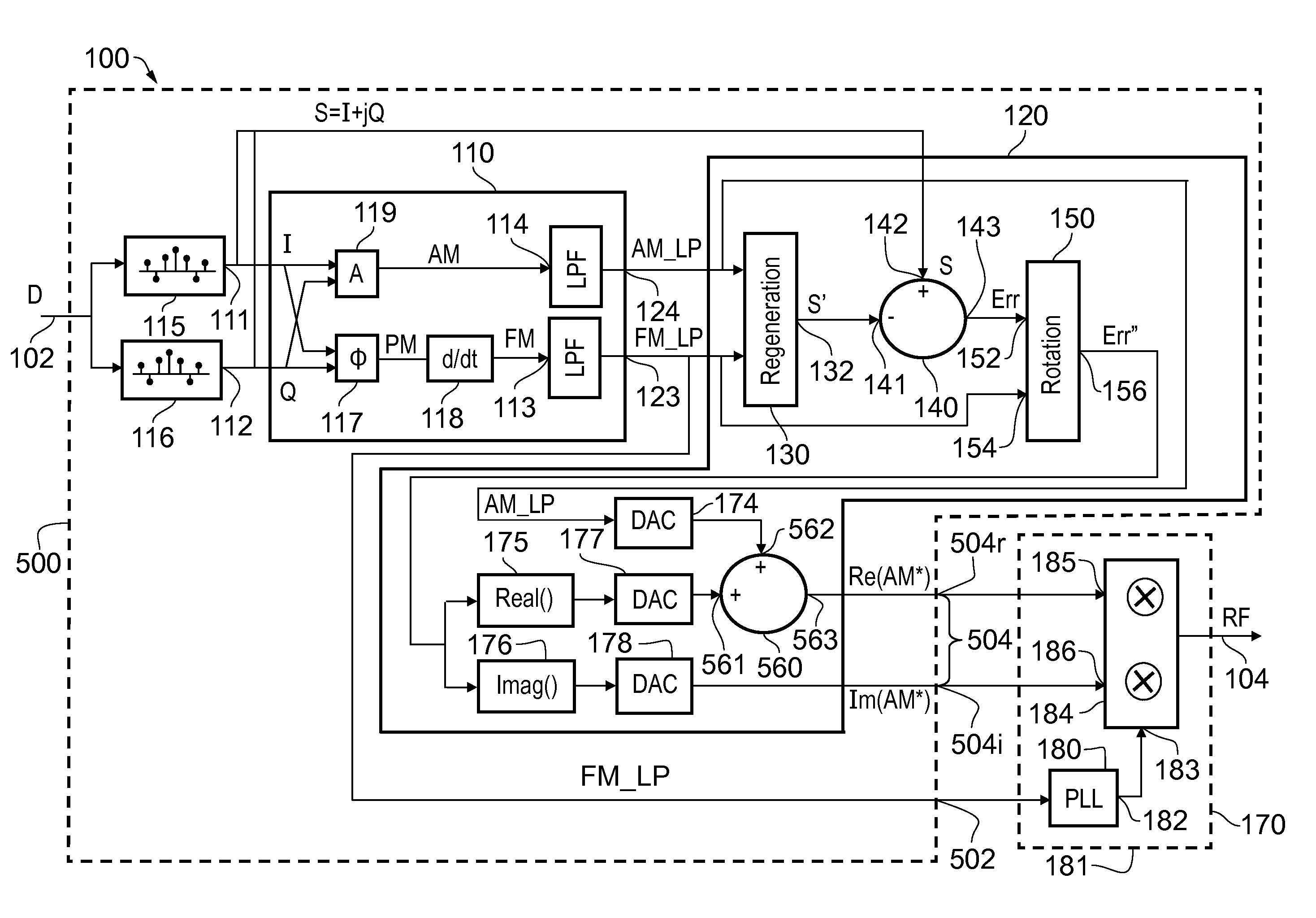Semi-polar modulator
a modulator and semi-polar technology, applied in the field of modulation processor and modulator, can solve the problems of less well suited to use in wider band radio system, wide bandwidth of phase and amplitude modulation signals used for modulating transmitters, and higher bandwidth of composite signals, so as to reduce the bandwidth of frequency signals, and reduce the bandwidth of amplitude signals.
- Summary
- Abstract
- Description
- Claims
- Application Information
AI Technical Summary
Benefits of technology
Problems solved by technology
Method used
Image
Examples
Embodiment Construction
[0008]According to a first aspect there is provided a modulation processor comprising a first processing stage and a second processing stage; wherein the first processing stage comprises:
[0009]a phase generation stage arranged to generate a phase signal indicative of a phase of a modulation signal;
[0010]a differentiation stage arranged to generate a frequency signal by differentiating the phase signal; and
[0011]a first bandwidth reduction stage arranged to generate a first output signal by reducing a bandwidth of the frequency signal; and
wherein the second processing stage is arranged to generate a second output signal proportional to the modulation signal with its phase retarded by an angle equal to an integral of the first output signal.
[0012]According to a second aspect there is provided a method of operating a modulation processor, comprising:
[0013]generating a phase signal indicative of a phase of a modulation signal;
[0014]generating a frequency signal by differentiating the ph...
PUM
 Login to View More
Login to View More Abstract
Description
Claims
Application Information
 Login to View More
Login to View More - R&D
- Intellectual Property
- Life Sciences
- Materials
- Tech Scout
- Unparalleled Data Quality
- Higher Quality Content
- 60% Fewer Hallucinations
Browse by: Latest US Patents, China's latest patents, Technical Efficacy Thesaurus, Application Domain, Technology Topic, Popular Technical Reports.
© 2025 PatSnap. All rights reserved.Legal|Privacy policy|Modern Slavery Act Transparency Statement|Sitemap|About US| Contact US: help@patsnap.com



